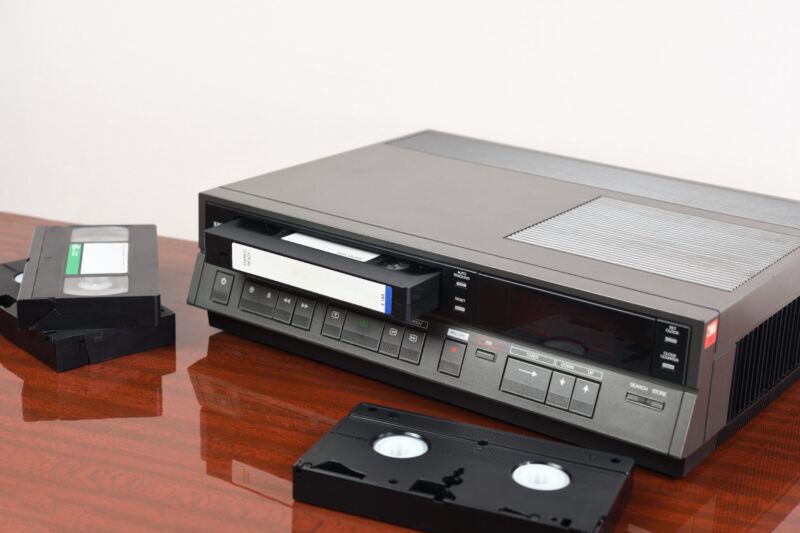
Getty Images | Aliaksandr Litviniuk
Microsoft urged a federal court to dismiss part of The New York Times’ copyright lawsuit against itself and OpenAI, claiming that the NYT lawsuit is similar to the movie industry’s attempts to kill the VCR in the 1980s.
Microsoft’s filing in US District Court for the Southern District of New York begins with a well-known 1982 quote from Motion Picture Association of America (MPAA) President Jack Valenti, who told Congress that “the VCR is to the American film producer and the American public as the Boston strangler is to the woman home alone.”
“The analogy was part of an all-out effort by television and movie producers to stop a groundbreaking new technology,” Microsoft wrote yesterday, comparing the movie industry’s claims of copyright infringement to the NYT lawsuit in which both OpenAI and Microsoft are defendants. Microsoft is an investor in OpenAI.
Microsoft claimed that the newspaper company’s arguments are similar to those rejected by the US Supreme Court in the 1984 case, Sony Corporation of America v. Universal City Studios. “Despite The Times’s contentions, copyright law is no more an obstacle to the LLM [large language model] than it was to the VCR (or the player piano, copy machine, personal computer, Internet, or search engine),” Microsoft wrote.
Microsoft’s VCR argument relates to a portion of the NYT lawsuit that claims the defendants are liable for users’ copyright infringement. “At most, The Times’s allegations establish Microsoft’s awareness that someone could use a GPT-based product to infringe,” Microsoft wrote. “Of course, the same was true of the VCR—as it is of word processors, hard drives, social media feeds, Internet connections, and so forth. Fortunately, the Supreme Court long ago rejected liability merely based on offering a multi-use product.”
A New York Times lawyer criticized the Microsoft filing. “Microsoft doesn’t dispute that it worked with OpenAI to copy millions of The Times’s works without its permission to build its tools. Instead, it oddly compares LLMs to the VCR even though VCR makers never argued that it was necessary to engage in massive copyright infringement to build their products,” Ian Crosby, a Susman Godfrey attorney who is representing the Times, said in a statement provided to Ars today.
NYT accused of “doomsday futurology”
OpenAI claimed last week that The New York Times “paid someone to hack OpenAI’s products” in order to set up the lawsuit. Microsoft accused the NYT of using “unrealistic prompts to try to coax the GPT-based tools to output snippets of text matching The Times’s content… Nowhere does The Times allege that anyone other than its legal team would actually do any of this, and certainly not on a scale that merits the doomsday futurology it pushes before this Court and has boosted to its readers.”
The NYT lawsuit complains that OpenAI and Microsoft’s AI products use LLMs “that were built by copying and using millions of The Times’s copyrighted news articles, in-depth investigations, opinion pieces, reviews, how-to guides, and more.”
“Through Microsoft’s Bing Chat (recently rebranded as ‘Copilot’) and OpenAI’s ChatGPT, Defendants seek to free-ride on The Times’s massive investment in its journalism by using it to build substitutive products without permission or payment,” the lawsuit said.
Microsoft filed a partial motion to dismiss the lawsuit, saying the court should throw out claims for contributory copyright infringement that allege Microsoft and OpenAI are liable for users’ infringement. The Times claimed that Microsoft and OpenAI “materially contributed to and directly assisted with the direct infringement perpetrated by end-users.”
In addition to the contributory infringement claim, the NYT lawsuit contains allegations of direct copyright infringement related to the training of LLMs using copyrighted material. The NYT also alleged vicarious copyright infringement because “Microsoft controlled, directed, and profited from the infringement perpetrated by the OpenAI Defendants.”
Microsoft’s motion didn’t ask the court to throw out the direct and vicarious infringement claims, but said the company will fight them later on in litigation with a fair-use defense. “As the Complaint anticipates in its assertion that creating an LLM is not ‘transformative,’ these claims will ultimately turn, among other things, on a fair-use defense under 17 U.S.C. § 107 not suited to the pleading stage,” Microsoft wrote.

